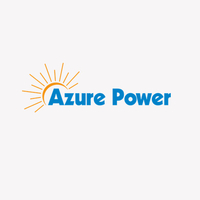Solar Energy Storage Solutions: Overcoming the Challenge of Intermittency
In the realm of renewable energy, solar power stands out as a frontrunner in the race towards sustainability. Its abundant availability and eco-friendly nature make it a promising alternative to conventional fossil fuels. However, one significant hurdle hindering its widespread adoption has been intermittency – the sun doesn't shine consistently, and solar panels can't generate electricity at night or during cloudy weather. But as the world shifts towards a cleaner energy future, innovative solutions in solar energy storage are emerging, promising to overcome this challenge and unlock the full potential of solar power.
The Rise of Solar Power:
Solar energy, derived from the sun's radiation, is harnessed through photovoltaic (PV) panels or concentrated solar power (CSP) systems. These technologies have witnessed remarkable advancements in efficiency and cost-effectiveness, driving a surge in solar installations worldwide. From rooftop solar arrays on residential homes to utility-scale solar farms spanning vast expanses of land, solar power is revolutionizing the way we generate electricity.
However, the intermittent nature of solar energy poses a significant obstacle to its seamless integration into the power grid. When the sun sets or is obscured by clouds, solar panels cease to produce electricity, leading to fluctuations in power output. This intermittency challenges grid stability and reliability, requiring backup power sources or energy storage solutions to fill the gaps and ensure a steady supply of electricity.
Enter Solar Energy Storage:
To address the intermittency of solar power, energy storage systems have emerged as a crucial component of the renewable energy infrastructure. These systems store excess energy generated during peak sunlight hours for later use when solar production is low or non-existent. Among various energy storage technologies, batteries have emerged as a frontrunner due to their versatility, scalability, and declining costs.
Lithium-ion batteries, commonly used in electric vehicles and consumer electronics, have become the go-to choice for solar energy storage applications. These batteries can store surplus solar energy efficiently and discharge it when needed, smoothing out the peaks and valleys of solar power generation. As a result, solar energy storage systems equipped with lithium-ion batteries can enhance grid stability, reduce reliance on fossil fuels, and maximize the utilization of renewable energy resources.
Utility-Scale Solar and Energy Storage:
In the realm of utility-scale solar, where vast solar farms generate electricity for entire communities or regions, energy storage plays a pivotal role in maximizing the value of solar investments. By coupling solar power plants with large-scale battery storage systems, developers can capture excess solar energy during the day and dispatch it during periods of high demand or when solar production is low.
Sustainable Energy Solutions Companies Leading the Way:
Sustainable energy solutions companies are at the forefront of innovation in solar energy storage, developing cutting-edge technologies and deploying integrated systems that combine solar power generation with energy storage capabilities. These companies leverage advancements in battery technology, grid management software, and predictive analytics to optimize the performance and efficiency of solar energy systems.
Furthermore, these companies are exploring novel approaches such as hybrid renewable energy systems, combining solar power with other renewable sources like wind or hydroelectric power, to further enhance energy reliability and resilience.
The Road Ahead:
As solar energy continues to play an increasingly prominent role in the global energy mix, overcoming the challenge of intermittency remains paramount. With ongoing advancements in solar energy storage technologies and the growing collaboration between industry stakeholders, the vision of a renewable energy future powered by the sun is becoming increasingly attainable.
In conclusion, solar energy storage solutions are revolutionizing the way we harness and utilize solar power, paving the way for a cleaner, more sustainable energy future. By overcoming the challenge of intermittency, these solutions are unlocking the full potential of solar energy and driving the transition towards a renewable energy-powered world.
For more information visit us @ https://www.azurepower.com/

www.naturalnews.com













